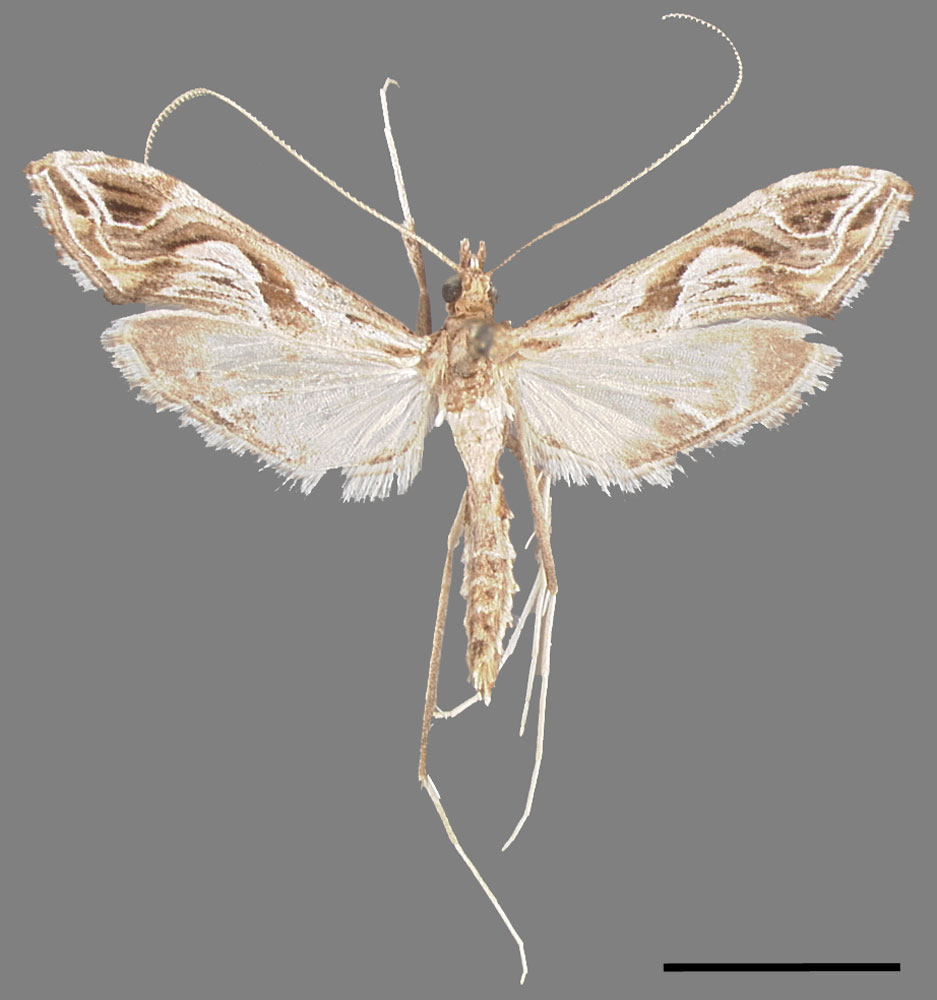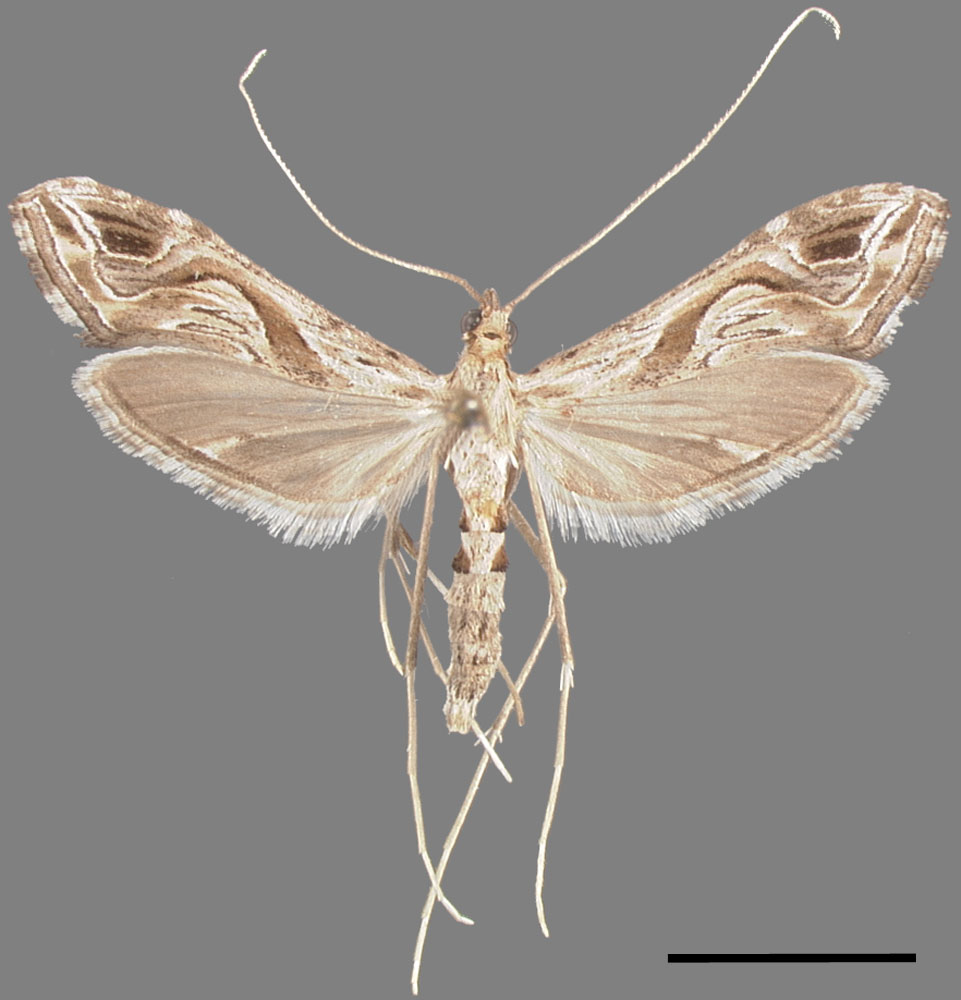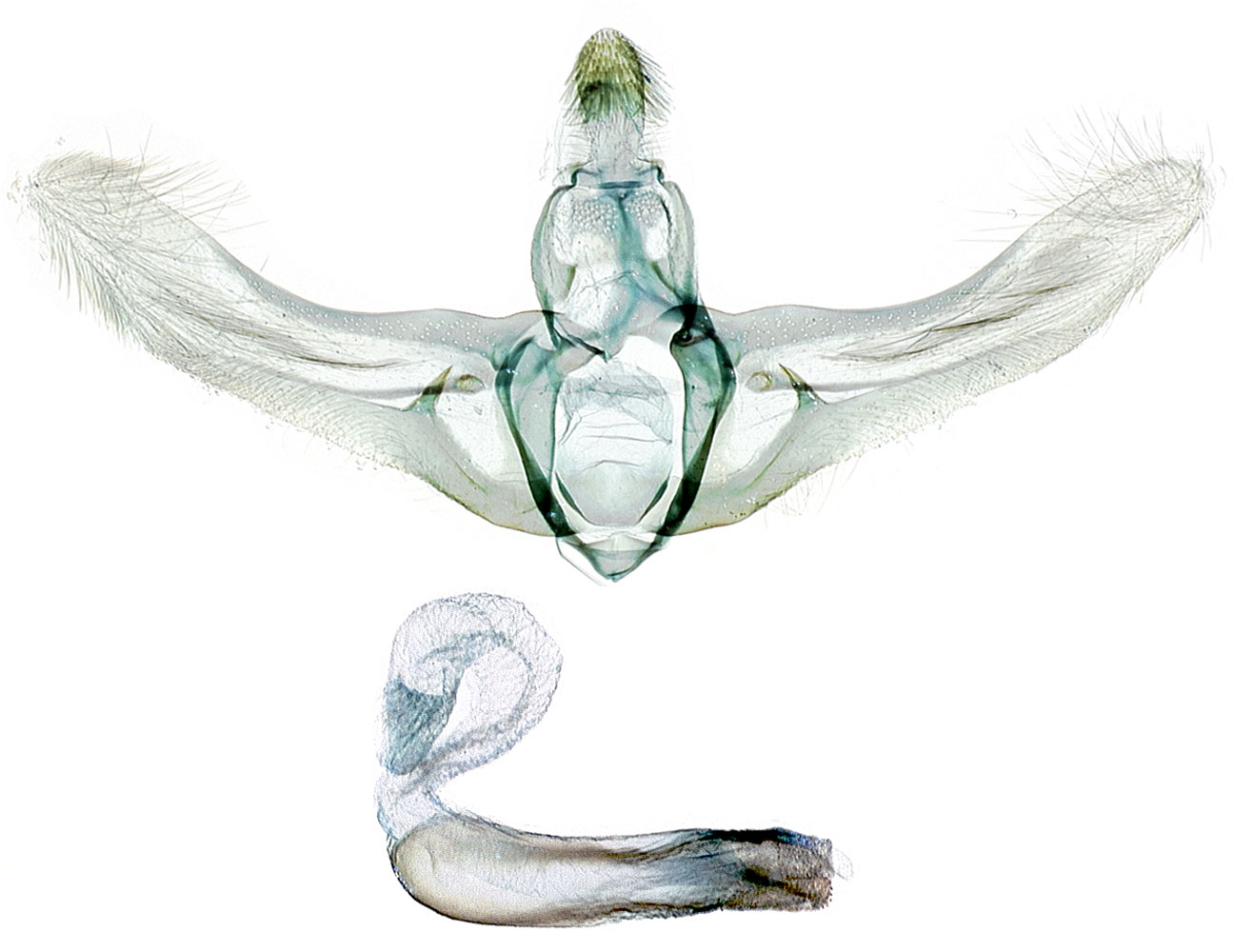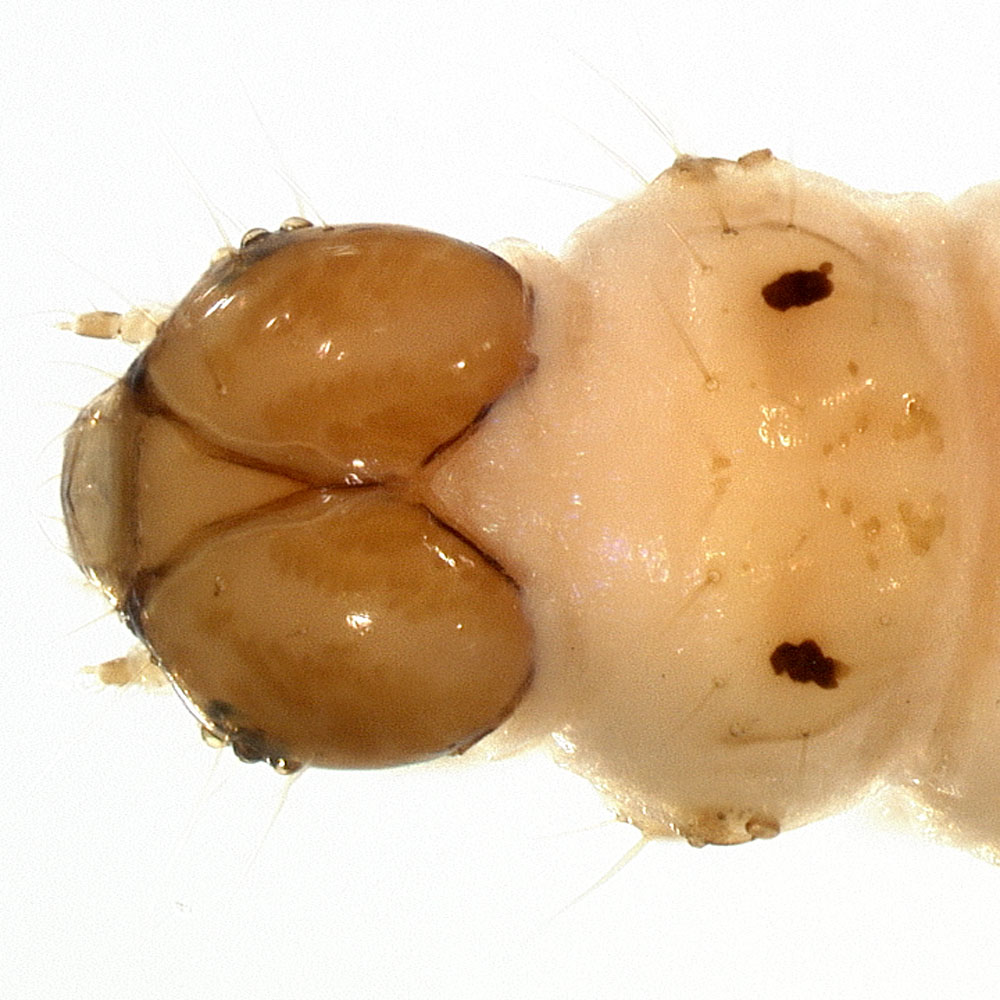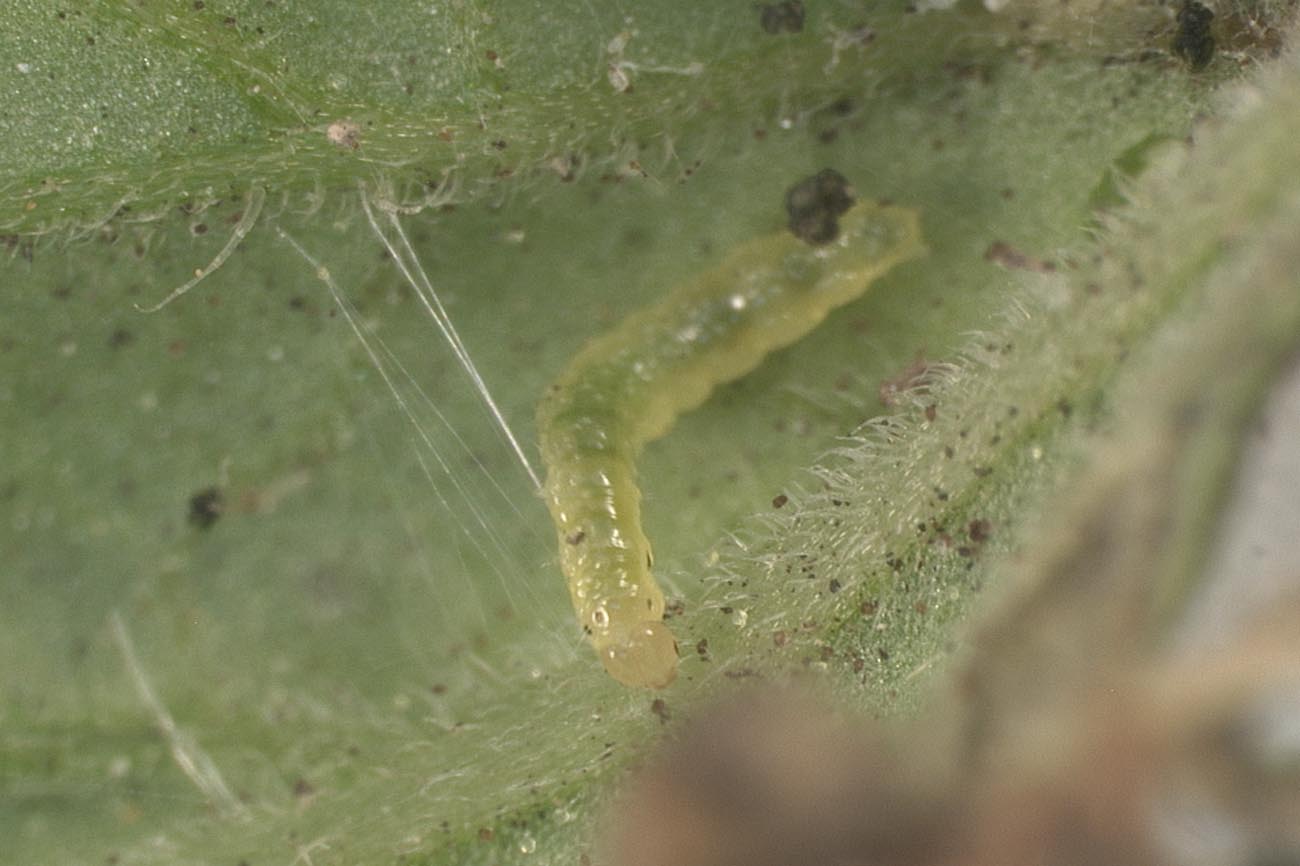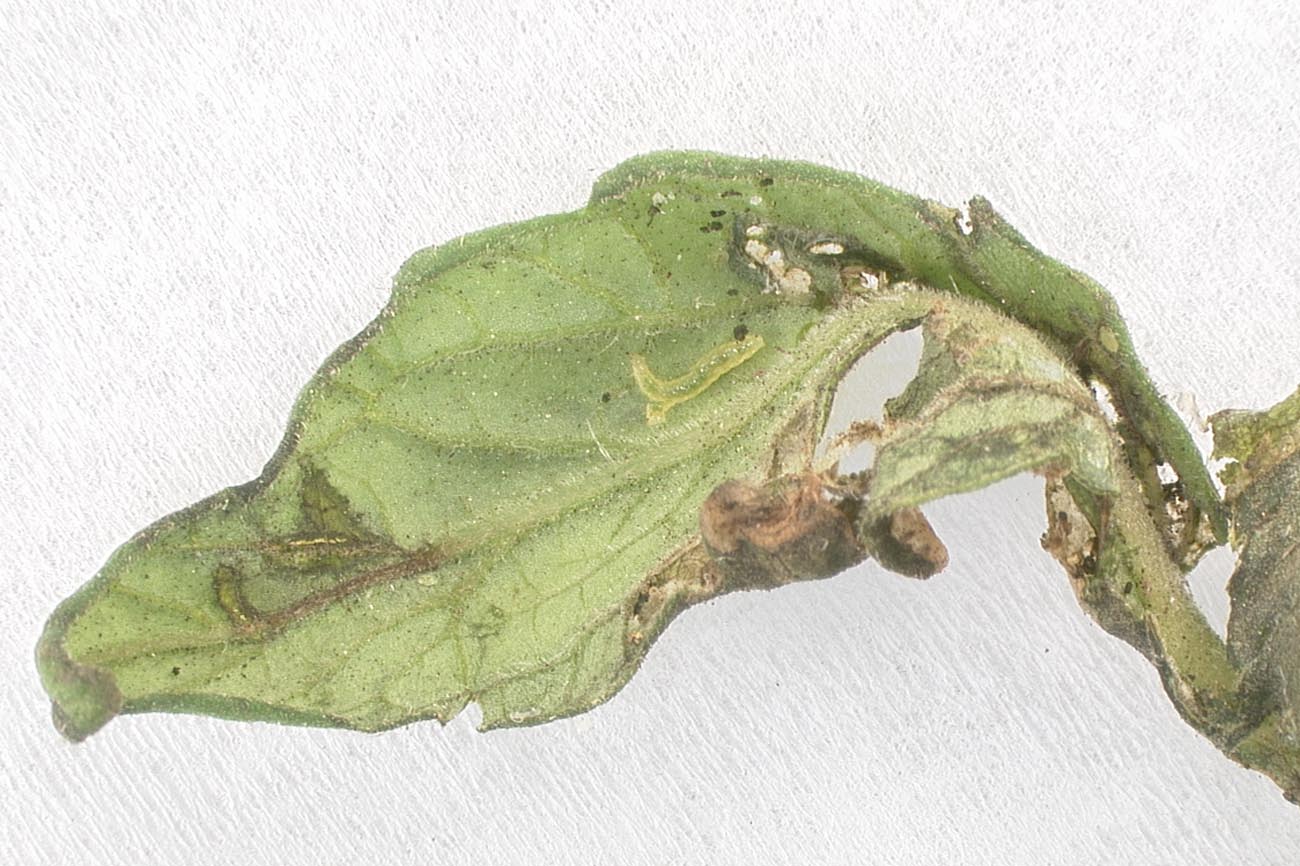Lineodes integra
|
Lineodes integra male habitus. Scale = 5 mm. |
|
Lineodes integra female habitus. Scale = 5 mm. |
|
Lineodes integra head. |
|
Lineodes integra male genitalia. |
|
Lineodes integra female genitalia. |
|
Lineodes integra larva. |
|
Lineodes integra larva, head and prothorax. |
|
Lineodes integra live larva and leaf damage. |
|
Lineodes integra live larva and leaf damage. |
Name
Lineodes integra (Zeller, 1873)
Common name: Nightshade leaf tier, Eggplant leafroller
Original combination: Scoptonoma integra Zeller, 1873
Synonyms: none.
Alternative combinations: none.
Classification: Pyraloidea, Crambidae, Spilomelinae, Leucinodes group
Adult recognition
Forewing length: 6.8 - 11.5 mm, narrow (largest specimens from California). The white longitudinal arc on the forewings is evenly rounded and does not reach the costaCosta:
(1) The anterior margin of the wing.
(2) In the male genitalia, the dorsal margin of the valva.
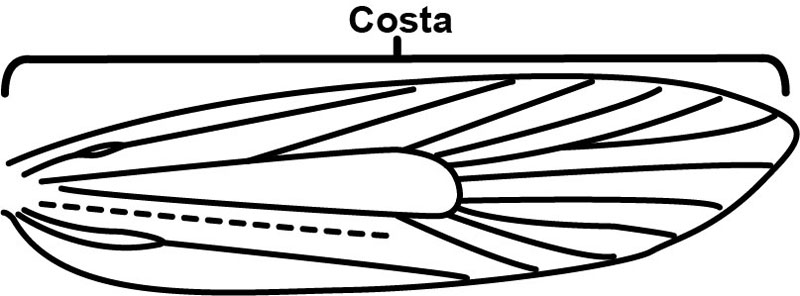 . In the male genitalia, the most prominent feature is a triangular spine directed upward from the sacculusSacculus:
. In the male genitalia, the most prominent feature is a triangular spine directed upward from the sacculusSacculus:
The ventro-basal area of the valva.
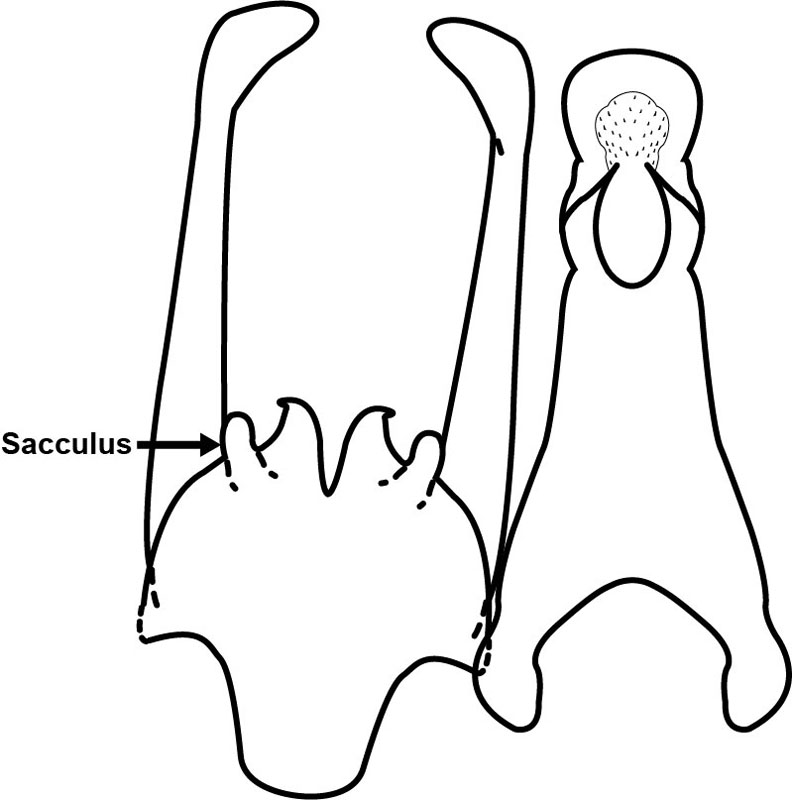 . The longitudinal fibulaFibula:
. The longitudinal fibulaFibula:
Any projection on the face of the valva (not including the saccular process, if any).
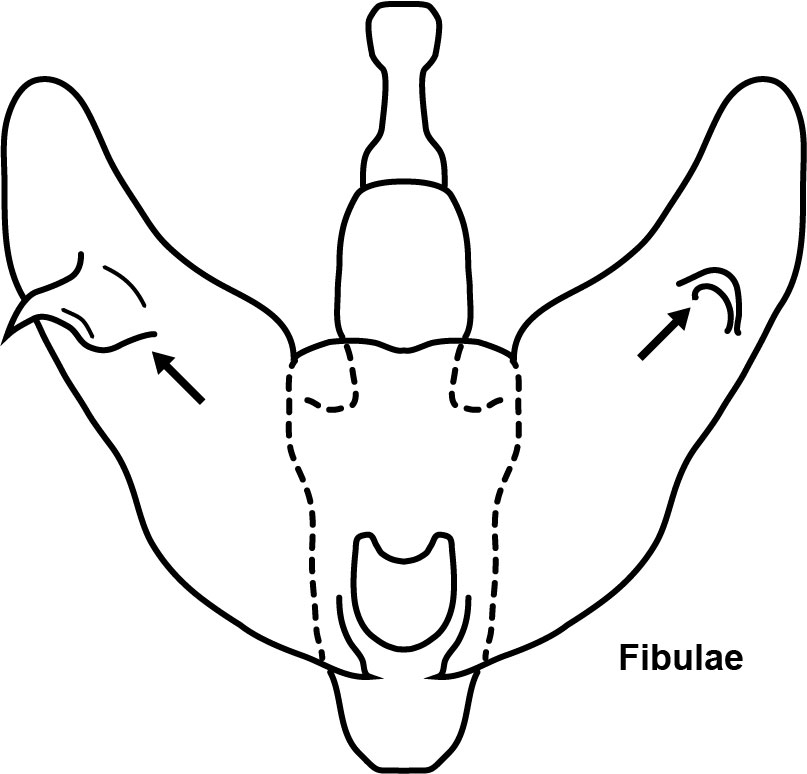 is only weakly developed as a ridge, prominent only at the base near the triangular spine. The female genitalia are not distinguishable from several other Lineodes species, having a narrow ductus bursaeDuctus bursae:
is only weakly developed as a ridge, prominent only at the base near the triangular spine. The female genitalia are not distinguishable from several other Lineodes species, having a narrow ductus bursaeDuctus bursae:
The usually narrow duct between the ostium and antrum and the corpus bursae.
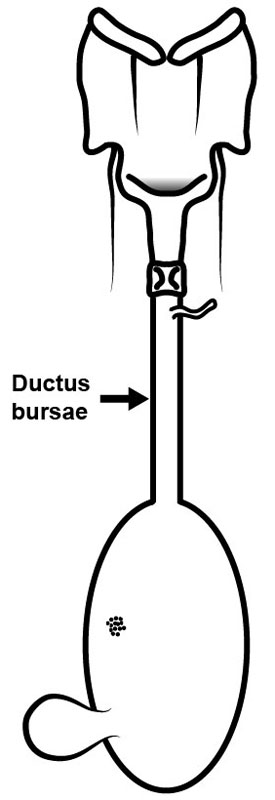 that is twice as long as the globular corpus bursaeCorpus bursae:
that is twice as long as the globular corpus bursaeCorpus bursae:
The enlarged, bulbous anterior end of the female genitalia.
 .
.
Immature stages
Among the species treated here, larvae of L. integra uniquely have a pair of black spots on the sides of the prothoracic shieldProthoracic shield:
Also called the T1 shield. In the larva, the extensive sclerotized area of the dorsal half of the prothorax. It bears six setae on each side, and its color pattern is often diagnostic.
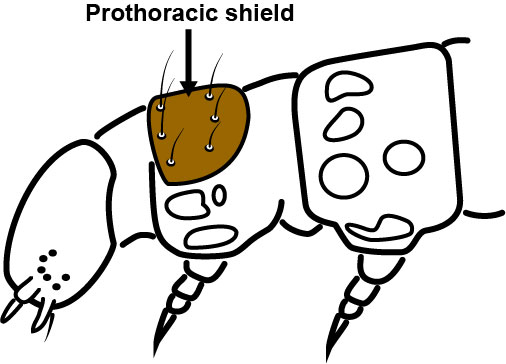 : these are darker and more sharply defined than the brown, irregular spots in some of the other species. Also unique is the position of SD2 posteroventral of SD1 on the mesothoraxMesothorax:
: these are darker and more sharply defined than the brown, irregular spots in some of the other species. Also unique is the position of SD2 posteroventral of SD1 on the mesothoraxMesothorax:
The second thoracic segment (T2) of any life stage.
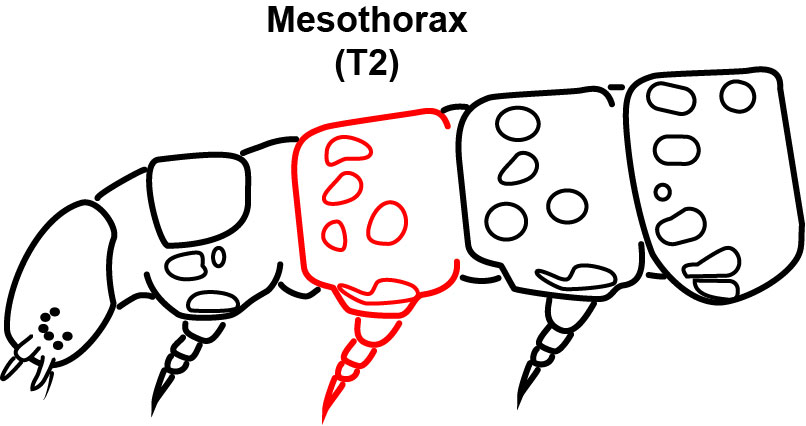 . The pinacula are not pigmented. The A1 SV group is bisetose.
. The pinacula are not pigmented. The A1 SV group is bisetose.
Similar species
Lineodes interrupta (Zeller) is a closely related species occurring mainly from Texas to Kansas and Missouri, although it is recorded as a stray as far as Florida. Despite its broad distribution, host records are practically unknown. The white arc on the forewing approaches the costaCosta:
(1) The anterior margin of the wing.
(2) In the male genitalia, the dorsal margin of the valva.
 in a triangle, interrupting the brown shading of the costaCosta:
in a triangle, interrupting the brown shading of the costaCosta:
(1) The anterior margin of the wing.
(2) In the male genitalia, the dorsal margin of the valva.
 . The male sacculusSacculus:
. The male sacculusSacculus:
The ventro-basal area of the valva.
 is inwardly extended as a low, round knob rather than a triangular spine. The female genitalia are identical. Lineodes ochrea Walsingham is endemic to Hawaii, where it feeds on eggplant. The wing pattern is paler brown, contrasting with dark brown AM and PM areas. The genitalia are like those of L. integra, with the saccular spine blunter. The larvae of few Lineodes species have been described. Lineodes fontella and L. hierglyphicalis are similar but lack the black spots on the prothoracic shieldProthoracic shield:
is inwardly extended as a low, round knob rather than a triangular spine. The female genitalia are identical. Lineodes ochrea Walsingham is endemic to Hawaii, where it feeds on eggplant. The wing pattern is paler brown, contrasting with dark brown AM and PM areas. The genitalia are like those of L. integra, with the saccular spine blunter. The larvae of few Lineodes species have been described. Lineodes fontella and L. hierglyphicalis are similar but lack the black spots on the prothoracic shieldProthoracic shield:
Also called the T1 shield. In the larva, the extensive sclerotized area of the dorsal half of the prothorax. It bears six setae on each side, and its color pattern is often diagnostic.
 ; however, conspicuous dark prothoracic spots are present in other spilomelines that feed on different hosts. The larva of L. triangulalis has pinacula with black-shaded margins.
; however, conspicuous dark prothoracic spots are present in other spilomelines that feed on different hosts. The larva of L. triangulalis has pinacula with black-shaded margins.
Behavior
The larvae are active through the spring into fall. They web leaves and hide in withered foliage. Young larvae feed on the lower side of leaves, eventually skeletonizing them, then rolling leaves in later instars or consuming the leaves entirely. They occasionally also graze the surface of petioles and feed on fruits of all stages, from buds to ripe fruit. They feed on the fruit surface when in high densities, attacking sheltered areas, such as under the sepals or where the fruit contacts other parts of the plant. Larvae do not directly bore into fruit, but the greatest damage is caused by grazing the fruit surface.
Pupation occurs on the plant, usually inside a rolled leaf edge, but sometimes on the axil or in crevices of the stem. Pupation lasts 7 to 10 days.
Distribution
Broadly distributed through South and North America. In North America, it occurs throughout the United States, from Florida to California, and as far north as Illinois, Wisconsin, and Washington. In the southern US, it is recorded from AL, FL, LA, MS, TX. Also recorded in Argentina, Bahamas, Brazil, CostaCosta:
(1) The anterior margin of the wing.
(2) In the male genitalia, the dorsal margin of the valva.
 Rica, Honduras, Mexico, and Nicaragua.
Rica, Honduras, Mexico, and Nicaragua.
Hosts
Capsicum annuum L. (pepper)
Nicotiana glauca Graham (tree tobacco)
Solanum angustifidum Bitter (as “S. jasminifolium,” Dyar 1901Dyar 1901:
Dyar HG. 1901. Descriptions of some pyralid larvae from southern Florida. Journal of the New York Entomological Society 9: 19-24.)
S. asperum Rich (as “S. radula,” Dyar 1901Dyar 1901:
Dyar HG. 1901. Descriptions of some pyralid larvae from southern Florida. Journal of the New York Entomological Society 9: 19-24.)
S. carolinense L. (horsenettle)
S. incarceratum Ruiz and Pav.
S. lycopersicum L. (tomato)
S. melongena L. (eggplant)
S. torvum Sw. (turkey berry)
S. tuberosum L. (potato)
S. umbelliferum Eschsch. (bluewitch nightshade)
“S. verbascifolium”
S. viarum (Tropical soda apple)
S. xanti A. Gray (chaparral nightshade)
Solanum spp. (“nightshade”)
Comments
Dyar (1901) recorded larvae on “Solanum radula” and “S. jasminifolium” in southern Florida, indicating that the former was wild.
Literature
Allyson 1984Allyson 1984:
Allyson S. 1984. Description of last-instar larvae of 22 species of North American Spilomelini (Lepidoptera: Pyralidae: Pyraustini) with a key to species. Canadian Entomologist 116: 1301-1334.
Campbell 1938Campbell 1938:
Campbell RE. 1938. The pyralid moth, Lineodes integra Zell., as a pest of eggplant. Journal of Economic Entomology 31: 457-458.
Compton 1937Compton 1937:
Compton CC. 1937. Lineodes integra Zell., a potential pest of greenhouse tomatoes. Journal of Economic Entomology 30: 451-454.
Dyar 1901Dyar 1901:
Dyar HG. 1901. Descriptions of some pyralid larvae from southern Florida. Journal of the New York Entomological Society 9: 19-24.
Keifer 1937Keifer 1937:
Keifer HH. 1937. California Microlepidoptera XI. Bulletin of the Department of Agriculture, State of California 26: 177-204.
Passoa 1985Passoa 1985:
Passoa SC. 1985. Taxonomy of the larvae and pupae of economically important Pyralid[a]e in Honduras. Unpublished Masterrsquo;s Thesis, University of Florida, [Gainesville].
Zimmerman 1958Zimmerman 1958:
Zimmerman EC. 1958. Insects of Hawaii. Volume 8, Lepidoptera: Pyraloidea. University Hawaii Press, Honolulu.

